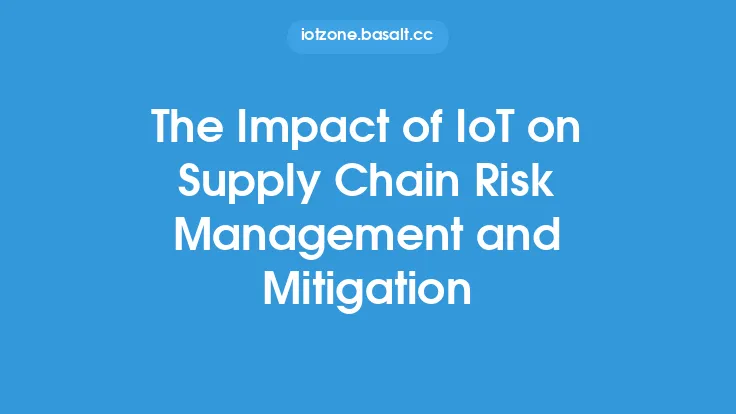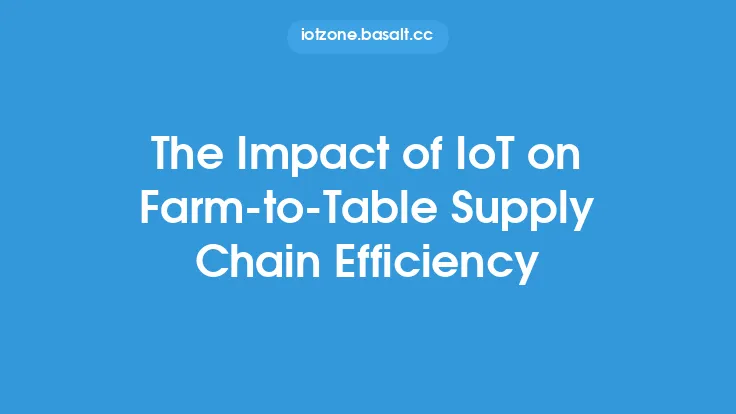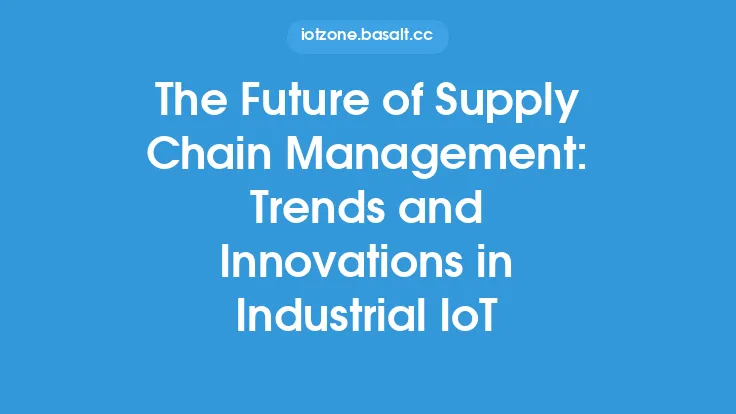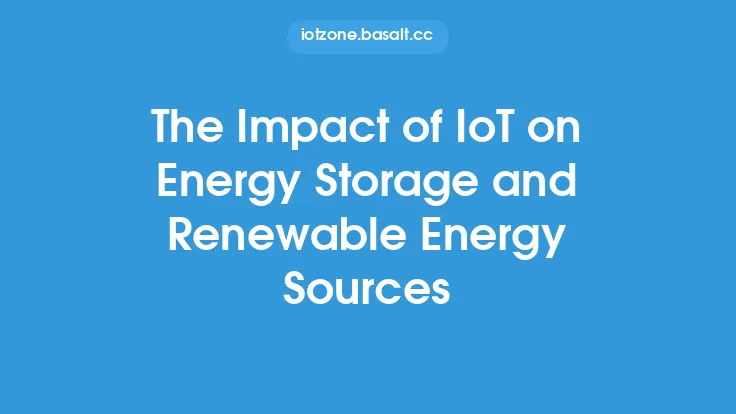The Internet of Things (IoT) has been transforming various industries, and one of the most significant impacts has been on supply chain optimization. The integration of IoT technology into supply chain management has revolutionized the way goods are produced, stored, transported, and delivered to customers. By leveraging IoT devices, such as sensors, RFID tags, and GPS trackers, businesses can now monitor and manage their supply chains in real-time, making it possible to optimize logistics, reduce costs, and improve customer satisfaction.
Introduction to IoT in Supply Chain Optimization
IoT technology has enabled the creation of a more connected and transparent supply chain. By deploying IoT devices throughout the supply chain, businesses can collect and analyze vast amounts of data, gaining valuable insights into their operations. This data can be used to identify bottlenecks, optimize routes, and predict potential disruptions, allowing companies to take proactive measures to mitigate risks and improve efficiency. The use of IoT in supply chain optimization has also enabled the development of more agile and responsive supply chains, capable of adapting to changing market conditions and customer demands.
Key Benefits of IoT in Supply Chain Optimization
The integration of IoT technology into supply chain management offers numerous benefits, including improved visibility, increased efficiency, and enhanced customer satisfaction. Some of the key benefits of IoT in supply chain optimization include:
- Real-time tracking and monitoring: IoT devices enable businesses to track their goods and assets in real-time, providing up-to-the-minute information on location, condition, and status.
- Predictive maintenance: IoT sensors can detect potential equipment failures, allowing businesses to schedule maintenance and minimize downtime.
- Optimized logistics: IoT technology can be used to optimize routes, reduce fuel consumption, and lower emissions.
- Improved inventory management: IoT devices can be used to track inventory levels, automate stockroom management, and optimize replenishment schedules.
- Enhanced security: IoT devices can be used to monitor and secure goods in transit, reducing the risk of theft and loss.
IoT Technologies Used in Supply Chain Optimization
Several IoT technologies are used in supply chain optimization, including:
- RFID (Radio Frequency Identification) tags: used to track and identify goods, assets, and equipment.
- GPS (Global Positioning System) trackers: used to track the location and movement of goods and assets.
- Sensors: used to monitor temperature, humidity, and other environmental conditions.
- Cellular and satellite connectivity: used to enable real-time communication and data transmission.
- Cloud-based platforms: used to collect, analyze, and visualize data from IoT devices.
Implementation of IoT in Supply Chain Optimization
Implementing IoT technology in supply chain optimization requires a strategic approach. Businesses should start by identifying areas of their supply chain that can benefit from IoT technology, such as inventory management, logistics, or predictive maintenance. They should then select the most suitable IoT devices and technologies, considering factors such as cost, scalability, and compatibility. It is also essential to develop a robust data analytics platform to collect, analyze, and visualize data from IoT devices, providing actionable insights and enabling data-driven decision-making.
Challenges and Limitations of IoT in Supply Chain Optimization
While IoT technology has the potential to transform supply chain optimization, there are several challenges and limitations that businesses must consider. These include:
- Data security and privacy: IoT devices can be vulnerable to cyber threats, and businesses must ensure that their data is secure and protected.
- Interoperability: IoT devices from different manufacturers may not be compatible, making it challenging to integrate them into a single platform.
- Cost: Implementing IoT technology can be expensive, and businesses must weigh the costs against the potential benefits.
- Complexity: IoT technology can be complex, requiring specialized skills and expertise to implement and manage.
Future of IoT in Supply Chain Optimization
The future of IoT in supply chain optimization is promising, with emerging technologies such as artificial intelligence, machine learning, and blockchain expected to play a significant role. These technologies will enable businesses to analyze and act on data in real-time, making it possible to create more agile and responsive supply chains. Additionally, the increasing use of IoT devices and the growing amount of data they generate will enable businesses to gain deeper insights into their operations, making it possible to optimize their supply chains and improve customer satisfaction. As IoT technology continues to evolve, we can expect to see even more innovative applications in supply chain optimization, transforming the way goods are produced, stored, transported, and delivered to customers.




